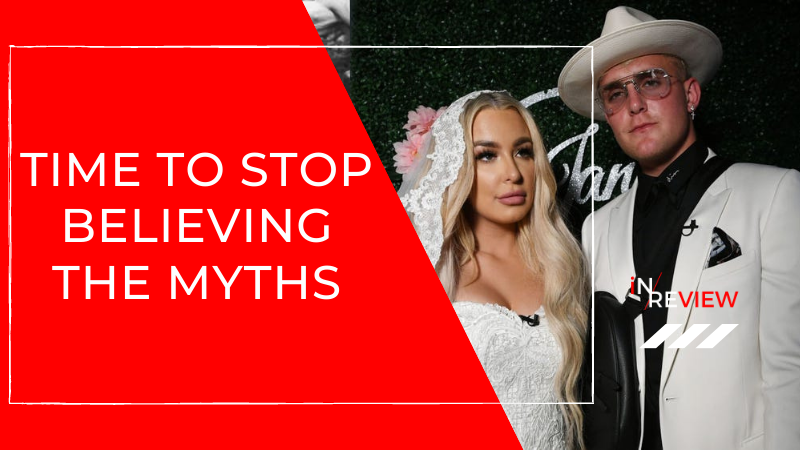What does polyamorous mean?
The Metro says since Willow Smith announced she was polyamorous, many have been asking what a poly relationship is.
More and more people are practicing ethical non-monogamy and the way society is viewing relationships is slowly changing – so what is Polyamorous?
The article says the term can be used both as a description of a relationship with more than two people and as a description of people who desire such relationships. Polyamory is not considered cheating, because all those involved are aware and consent to their involvement.
Everyone involved will be in agreement that anyone involved is open to having other romantic partners and will often help and encourage their lover to seek out new partners.

‘Polyamorous’ is an umbrella term for non-monogamous relationships:
- 1. Someone with multiple partners who are not connected but are equal (sometimes called anarchamory)
- 2. A group where all partners are committed to each other in a triad or sometimes more (triad/quad/delta/throuple/non-hierarchical poly)
- 3. A pair defined as primary partners – the person they are closest to – and then other secondary or tertiary partners (hierarchical poly)
- 4. Someone with a single emotional partner but they are sexually open with more than that one person (open relationship/ethical or consensual non-monogamy ([ENM/CNM])
The article adds that polyamory can involve marriage but should not be confused with polygamy, the act of marrying multiple people, which is illegal in many countries.
Polyamory: Beyond the confines of monogamous love
Medical News Today says monogamy is still the norm, but different types of relationships are gaining ground. In their spotlight feature, they spoke to some polyamorous people to find out what polyamorous people want you to know about polyamory.
The article says movies and books are filled with stories involving soulmates and the idea of the “happily ever after” and being “made for each other.”
But over the past few decades, people have been saying monogamy is not for them. One form of nonmonogamous practice that has gained attention in the media is polyamory.

How would you define polyamory?
According to the article, those spoken to about this question had similar reactions.
“It’s probably the hardest [question] to answer,” one interviewee, Ella, said. Another, Sebastian, exclaimed, “quite a hard question, to be honest!”
The difficulty in describing it is due to the various forms it can take. They can be hierarchical – with one person being the “primary” partner. Or they can be nonhierarchical – in which everyone involved is of equal standing.
Moreover, a person could be in separate relationships with different partners or in a relationship in which all or several partners are also romantically engaged with each other.
Despite noting how hard it was to define polyamory, those spoken to for the article said: Polyamory is about spreading love.
It’s not (just) about sex
The people spoken to for the article also agreed about the main misconception of polyamorous relationships.
“Many people mistake polyamorous relationships for open relationships,” Jim told the paper. So what’s the difference between the two, really?
He explained: “An open relationship allows its partners to pursue nonserious sexual and romantic relationships with people outside the relationship. However, open relationships share with monogamous relationships the obligation to not pursue any serious romantic relationships with other people.”

Polyamorous Relationship Myths It’s Time to Stop Believing
Glamour writes we’re living in an age where we talk more openly about the sexual spectrum – but polyamory still feels a little taboo.
Glamour says the problem is the narrative we’ve been told to play into. The attitudes around nonmonogamous relationships are rapidly changing but there are still some myths we need to stop believing.
Myth 1: Polyamory is mostly about having a lot of sex.
Most poly people will tell you that they aren’t into polyamory just for sex. Many poly people want to build what they see as a sort of extended support network, where some, not all, of the connections involve a sexual component.
And some people get into it because they are interested in a romantic relationship without sex.
Myth 2: A polyamorous relationship is for people who don’t want to commit.
Juggling multiple relationships is one key challenge of living a polyamorous life. Most people attempt to manage through good communication, and effort to balance the needs and desires, and for practicality shared calendars. There’s a lot of commitment, time, and effort needed for a poly relationship to work.
Myth 3: Polyamory can never work long-term because humans are jealous by nature.
Poly folks are not above jealousy. But they learn to respond to the feeling of envy with openness and curiosity, rather than shame.
Liz Powell, a sex therapist and speaker said:
“Humans are messy creatures. We have messy hearts that feel things strongly. That doesn’t mean that you’re doing it wrong or that you’re bad at poly, it just means that you’re having feelings. I think it’s worth looking at those feelings and acting on what they are telling you.”
Find out about the other myths by clicking on the link above.

DEEP DIVE
There’s a dark side of polyamory that nobody talks about – Insider
Willow Smith shares she’s polyamorous on ‘Red Table Talk’ – CNN
B.C. judge orders second mother declared a third parent to child of the polyamorous trio – CBC
Love Letter: Can Polyamory With a Monogamous Partner Work? – NY Times
What Does Google Have Against Polyamory? – Inside Hook
The Chosen Few: Polyamory and the Law – verdict
Polygamy, Polyamory And The Changing American Family – Radiowest
Quick Facts
What is a poly type relationship?
To be polyamorous means to have open intimate or romantic relationships with more than one person at a time. People who are polyamorous can be heterosexual, lesbian, gay, or bisexual, and relationships between polyamorous people can include combinations of people of different sexual orientations.
Why is polyamory illegal?
Polyamory is not a legally protected status, like being straight or gay. You can lose your job for being polyamorous. Courts can use it against you in child custody proceedings. Polyamory and non-monogamy take many different forms.
How is polyamory different from polygamy?
What’s the short answer? In short, polyamory is the act of having intimate relationships with more than one person at the same time. A polyamorous person might have or might be open to having multiple romantic partners. Polygamy, on the other hand, involves being married to multiple partners.
Why is Pi on the polyamory flag?
The symbol in the center of the flag is a gold Greek lowercase letter ‘pi’, as the first letter of ‘polyamory’. The letter’s gold color represents the value that we place on the emotional attachment to others, be the relationship friendly or romantic in nature, as opposed to merely primarily physical relationships.


